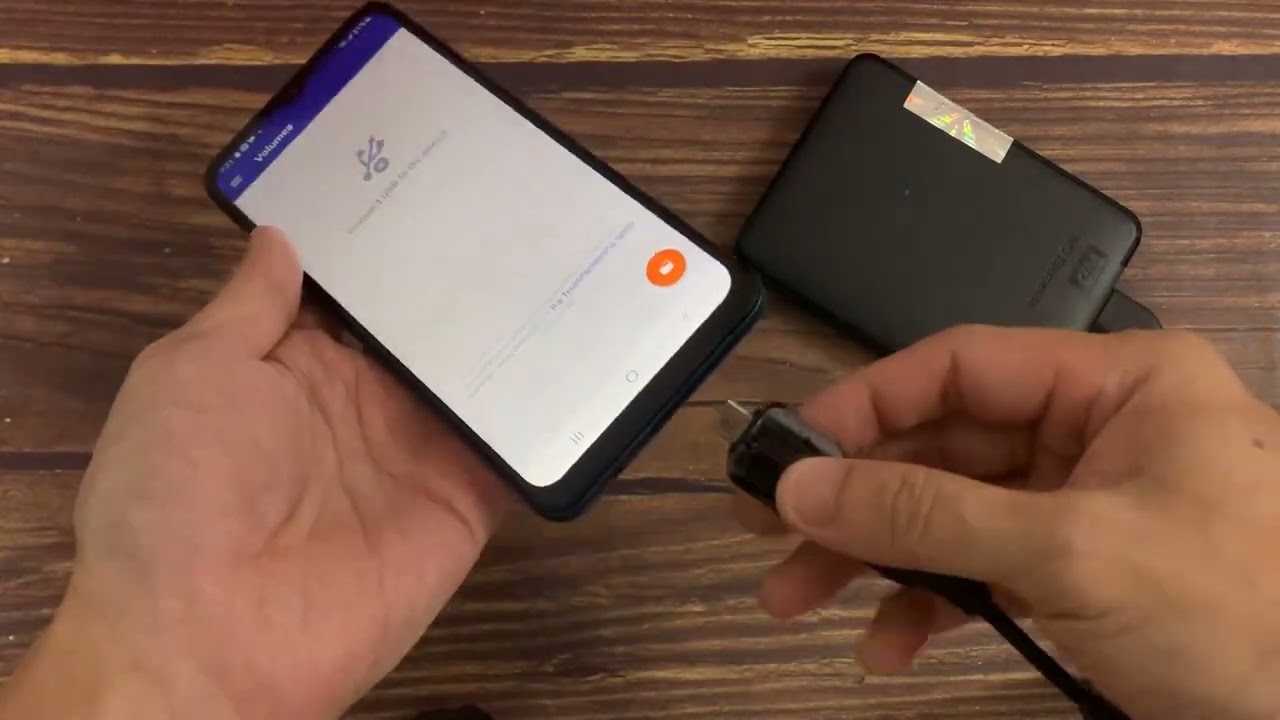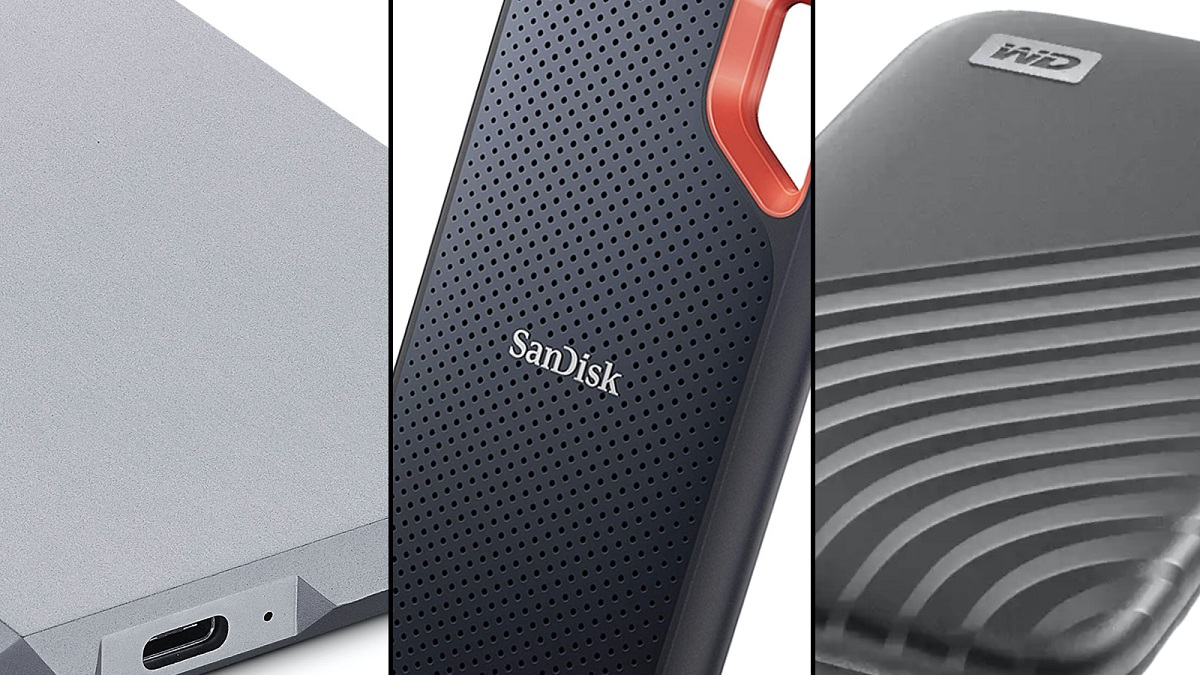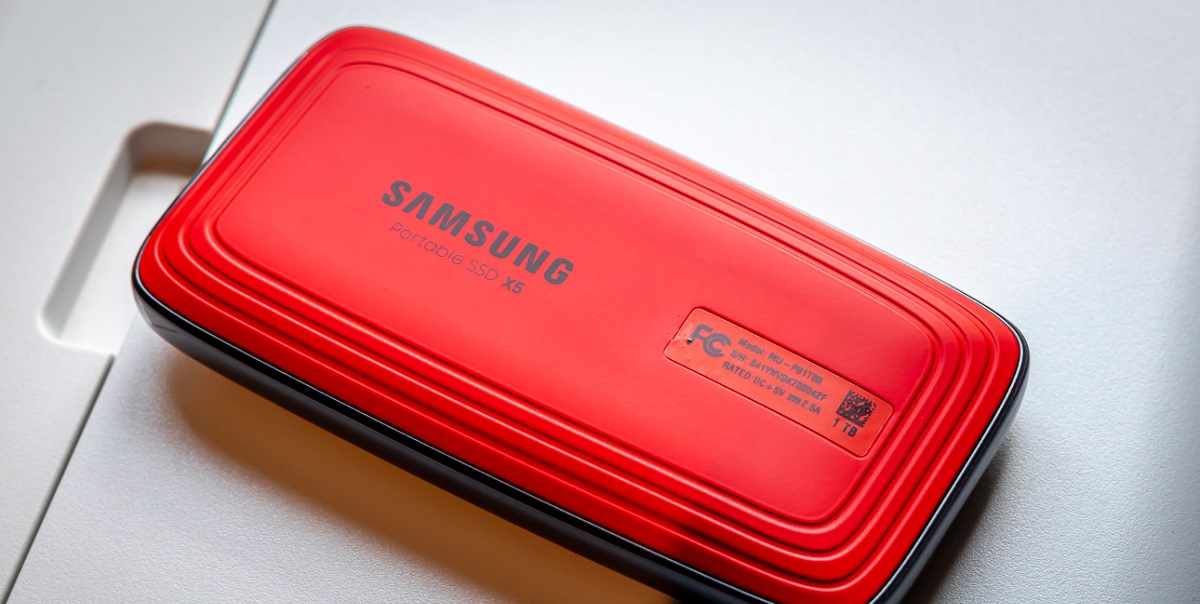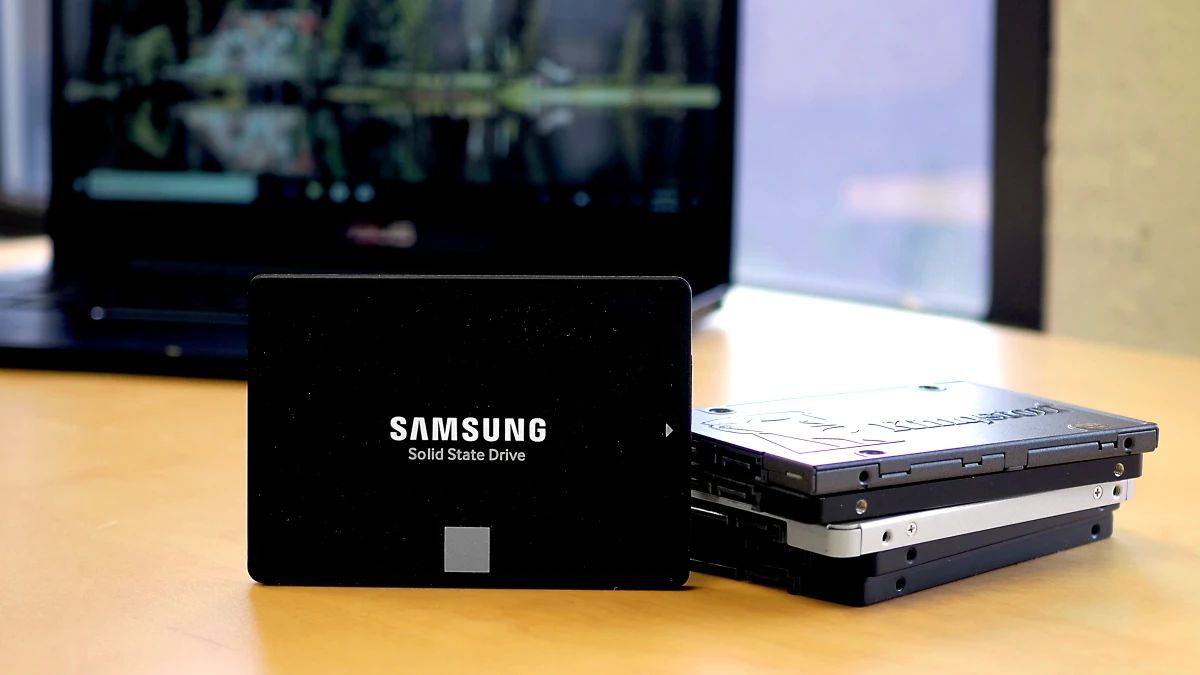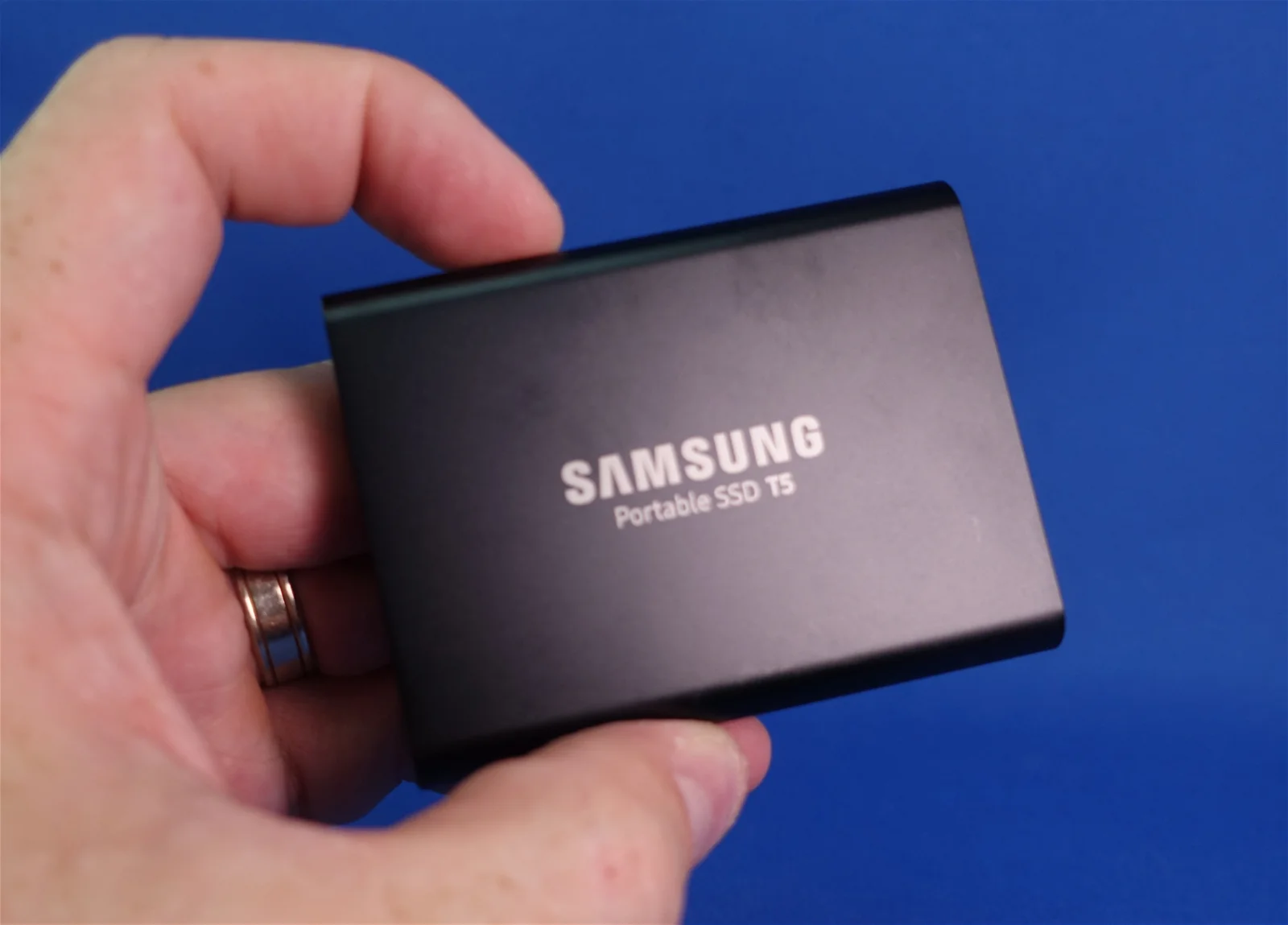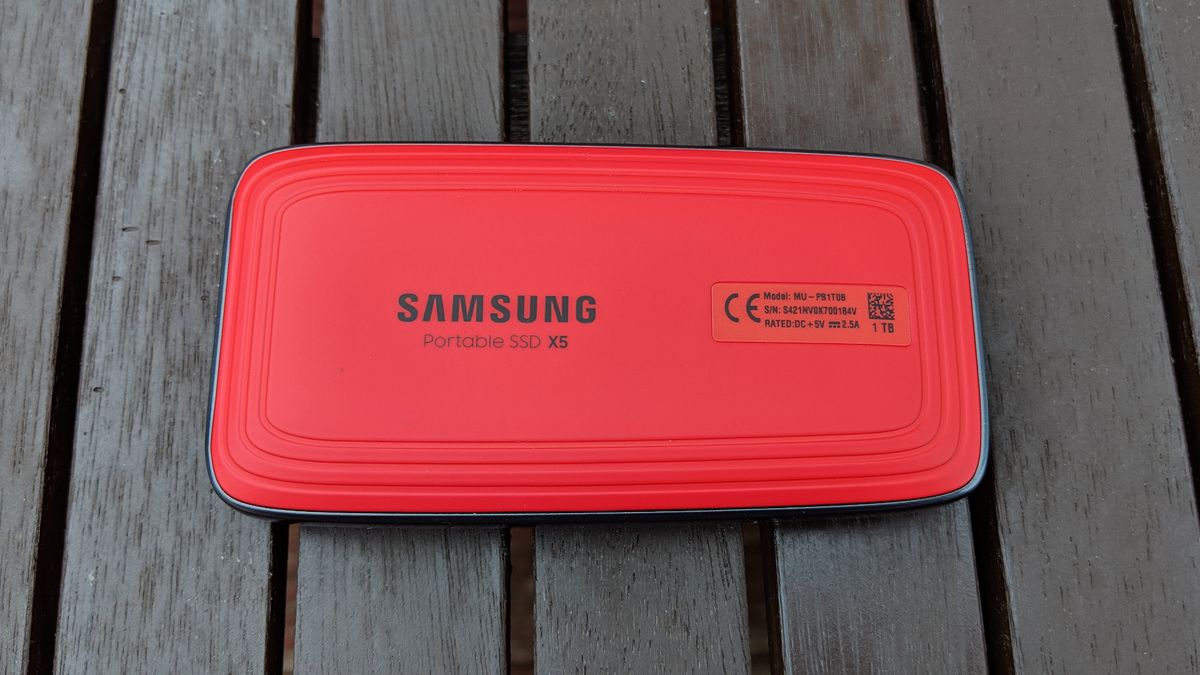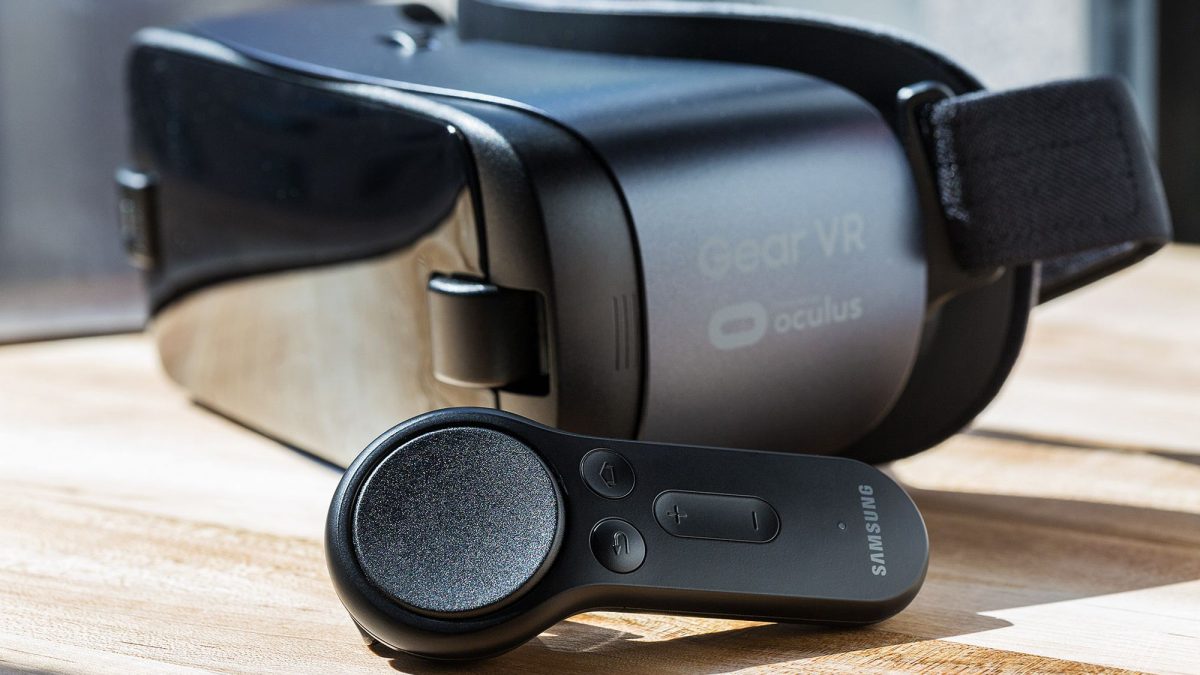Introduction
Welcome to the world of portable SSDs and the possibilities they offer for expanding the storage capacity of your Android phone. With the increasing demand for high-quality media content and the need to store and access large files on the go, portable SSDs have become a popular choice for many smartphone users.
A portable SSD, or Solid State Drive, is a compact and lightweight external storage device that uses flash memory technology to store and retrieve data. Unlike traditional hard drives, which rely on spinning disks, portable SSDs have no moving parts, making them more durable, shock-resistant, and faster in data transfer speeds.
So why should you consider using a portable SSD with your Android phone? The answer lies in the numerous benefits it offers. First and foremost, a portable SSD provides you with additional storage space. With the increasing size of apps, photos, videos, and other files, it is easy to run out of storage on your phone. By connecting a portable SSD, you can free up space and ensure that you never miss capturing a moment or downloading an important file.
In addition to storage capacity, portable SSDs also offer faster data transfer speeds. Transferring large files such as HD videos or high-resolution photos can be time-consuming on some smartphones. However, with a portable SSD, you can transfer files in a matter of seconds, making it convenient for sharing and backing up your data.
The compatibility between portable SSDs and Android devices is another advantage to note. As Android is an open-source operating system, it supports various file formats and allows for easy integration with external devices. Whether you have a smartphone, tablet, or even an Android TV, you can connect a portable SSD and access your files seamlessly.
In this comprehensive guide, we will explore how to choose the right portable SSD for your Android phone, provide a step-by-step guide on connecting and transferring files, and share best practices for using a portable SSD on your Android device. So, let’s dive in and discover the world of possibilities that a portable SSD opens up for your Android phone!
What is a Portable SSD?
A portable SSD, or Solid State Drive, is a compact and lightweight external storage device that uses flash memory technology to store and retrieve data. Unlike traditional hard drives, which rely on spinning disks, portable SSDs have no moving parts, making them more durable, shock-resistant, and faster in data transfer speeds.
Portable SSDs are designed to be easily portable, allowing you to carry them in your pocket or bag wherever you go. They come in various storage capacities, ranging from a few hundred gigabytes to several terabytes, giving you ample space to store your files, documents, photos, videos, and more.
One of the significant advantages of portable SSDs is their speed. The flash memory technology used in SSDs enables faster data transfer rates compared to traditional hard drives. This means that you can transfer large files, such as HD videos or high-resolution photos, in a fraction of the time it would take with a regular external hard drive.
Additionally, portable SSDs offer faster access times, allowing you to quickly retrieve files and applications. This makes them ideal for tasks that require fast loading times, such as video editing, gaming, and running complex software.
Another key benefit of portable SSDs is their durability. Since they have no moving parts, they are more resistant to shocks, drops, and vibrations. This makes them a reliable choice for those who are constantly on the move or in environments where accidents are more likely to occur.
Furthermore, portable SSDs consume less power compared to conventional hard drives, making them energy-efficient and suitable for use with devices that have limited battery life, such as smartphones and laptops.
Overall, portable SSDs offer a combination of portability, reliability, and speed. Whether you need to expand the storage capacity of your Android phone, back up important data, or transfer files quickly between devices, a portable SSD can be a valuable tool in your digital arsenal.
Benefits of using a Portable SSD
Using a portable SSD with your Android phone offers a multitude of benefits that can enhance your mobile experience. Let’s explore some of the key advantages:
- Expanded Storage Capacity: One of the most significant benefits of using a portable SSD is the ability to expand your Android phone’s storage capacity. With the increasing size of apps, media files, and documents, it’s easy to run out of space on your device. By connecting a portable SSD, you can store your files externally, freeing up precious space on your phone for new downloads and capturing new memories.
- Fast Data Transfer Speeds: Portable SSDs excel in delivering fast data transfer speeds. Unlike traditional storage options, such as hard drives, portable SSDs utilize flash memory technology, enabling rapid read and write speeds. Transferring large files, such as high-resolution photos or 4K videos, becomes incredibly quick and efficient.
- Improved Performance: Another advantage of using a portable SSD is the potential for improved performance on your Android phone. By storing frequently used apps and files on the SSD, you can reduce the load on your phone’s internal storage, thereby optimizing its overall performance and responsiveness.
- Portability and Convenience: As the name suggests, portable SSDs are designed with mobility in mind. They are significantly smaller and lighter than traditional storage devices, making them incredibly convenient to carry around. Whether you’re a traveler, professional, or student, having a portable SSD allows you to take important files, projects, or presentations with you wherever you go.
- Durability and Reliability: Portable SSDs are built to withstand the rigors of everyday use. Unlike traditional hard drives, they have no moving parts, making them more resistant to shock, vibration, and accidental drops. This durability ensures that your data remains safe even in challenging environments.
- Compatibility with Multiple Devices: Another benefit of portable SSDs is their compatibility with a wide range of devices. Whether you have an Android phone, tablet, laptop, or even a gaming console, you can easily connect and transfer files to and from your portable SSD. This versatility allows you to access your data across multiple platforms, enhancing productivity and convenience.
- Data Security: Portable SSDs often come with built-in encryption and password protection features. This ensures that your sensitive files and personal data remain safe and secure, providing you with peace of mind.
Incorporating a portable SSD into your Android phone setup can greatly enhance your storage capabilities, boost performance, and make file management more efficient. Whether you’re a digital content creator, photographer, or simply a smartphone power user, the benefits of using a portable SSD are undeniable.
Choosing the right Portable SSD for your Android phone
When it comes to choosing the right portable SSD for your Android phone, there are several factors to consider. Here are some key points to keep in mind:
- Storage Capacity: Determine your storage needs and choose a portable SSD that provides ample capacity for your files. Consider the types of files you will be storing, such as photos, videos, or documents, and ensure that the SSD has enough space to accommodate them.
- Transfer Speed: Look for a portable SSD with fast transfer speeds, as this will enable quick file transfers and efficient data management. SSDs with USB 3.0 or higher support are recommended for optimal performance.
- Compatibility: Ensure that the portable SSD you choose is compatible with your Android phone. Check for compatibility with your device’s operating system and connection options (such as USB Type-C or micro-USB) to ensure seamless connectivity.
- Size and Portability: Consider the size and weight of the portable SSD, as you’ll want something that is easy to carry around. Look for models that are compact and lightweight without sacrificing durability.
- Price: Evaluate your budget and compare the prices of different portable SSDs. While price is an important consideration, make sure you balance it with the features and performance offered by the SSD.
- Brand and Reliability: Choose a reputable brand known for producing reliable and high-quality portable SSDs. Reading customer reviews and checking the warranty offered can give you insights into the reliability and durability of the product.
- Data Security Features: If data security is a priority for you, consider portable SSDs that offer encryption and password protection features. These features provide an extra layer of security for your sensitive files and personal information.
- Additional Features: Some portable SSDs come with additional features such as rugged casings for added durability, water resistance, or compatibility with specific software or applications. Evaluate these extra features to see if they align with your specific needs and preferences.
By considering these factors, you can choose the right portable SSD for your Android phone that meets your storage needs, performance requirements, and personal preferences. Remember to research and compare different models to make an informed decision and ensure that the portable SSD aligns perfectly with your Android phone requirements.
Compatibility of Portable SSD with Android devices
One of the key advantages of using a portable SSD with your Android phone is the wide compatibility between these devices. Android, being an open-source operating system, is designed to work seamlessly with external storage devices, including portable SSDs. Here are some important points to understand about the compatibility of portable SSDs with Android devices:
File System Compatibility: Most portable SSDs are formatted with the widely compatible exFAT or FAT32 file systems, which can be read and written by Android devices. This allows you to connect the portable SSD to your Android phone and easily access and transfer files without any compatibility issues.
Connection Options: Portable SSDs typically come with USB connectors, such as USB Type-C or micro-USB, which are commonly found on Android devices. It’s important to ensure that the portable SSD you choose has the appropriate connector that matches your Android phone’s port. Alternatively, you can use a USB adapter or cable to connect the SSD to your device.
Operating System Support: Android devices are designed to work with a wide range of external storage devices, including portable SSDs. Whether you have a smartphone, tablet, or even an Android TV, you can connect a compatible portable SSD and access your files seamlessly. Ensure that your Android device is running a compatible version of the operating system to ensure optimal compatibility.
Third-Party Apps and File Managers: To manage and access files on your portable SSD with ease, you can utilize third-party file manager apps available on the Google Play Store. These apps provide a user-friendly interface for navigating and organizing files on both your internal storage and the portable SSD. Examples of popular file manager apps include Solid Explorer, ES File Explorer, and Total Commander.
Supported File Formats: Android devices support a wide range of file formats, including documents, photos, videos, audio files, and more. Portable SSDs can store files in these formats, allowing you to easily transfer, view, or edit them directly from your Android phone.
Device-Specific Limitations: It’s important to note that certain Android devices may have specific limitations when it comes to using portable SSDs. For example, some older Android models may have restrictions on the maximum storage capacity they can support or may only support USB 2.0 instead of the faster USB 3.0 transfer speeds. Additionally, some devices may require additional software or firmware updates to ensure compatibility with certain portable SSD models.
Overall, the compatibility between portable SSDs and Android devices is extensive, allowing you to expand your storage capacity, transfer files quickly, and seamlessly manage your data. With the right portable SSD and an Android device, you can enjoy the convenience, flexibility, and efficiency of external storage on the go.
Step-by-step guide to connecting Portable SSD to Android phone
Connecting a portable SSD to your Android phone is a straightforward process. Follow these step-by-step instructions to ensure a seamless connection:
- Check the compatibility: Before connecting the portable SSD, ensure that it is compatible with your Android phone’s operating system and supports the necessary connection interface (e.g., USB Type-C, micro-USB).
- Connect the portable SSD to the Android phone: Using the appropriate cable or adapter, connect one end of the cable to the portable SSD and the other end to the USB port of your Android phone. Make sure the connection is secure.
- Grant necessary permissions: Once the portable SSD is connected, your Android phone may prompt you to grant certain permissions, such as accessing external storage or allowing file transfers. Follow the on-screen prompts and grant the necessary permissions for the SSD to function properly.
- Wait for the device to recognize the portable SSD: Your Android phone should automatically recognize the connected portable SSD. This process may take a few seconds, so be patient and allow the phone to detect the external storage device.
- Access the portable SSD: Once the portable SSD is recognized, you can access it through your Android phone’s File Manager app or any third-party file manager app of your choice. Open the app and navigate to the external storage section, where you should see the portable SSD listed as a separate storage device.
- Manage files: With the portable SSD connected, you can now manage files on the SSD directly from your Android phone. You can copy files from your phone’s internal storage to the SSD, move files between folders on the SSD, or delete unwanted files. Simply select the file(s) you want to manage and use the appropriate options within the file manager app.
- Transfer files: To transfer files between your Android phone and the portable SSD, select the desired files or folders and use the file manager’s copy or move function. Specify the destination folder on the portable SSD to complete the transfer. The high-speed transfer capabilities of the portable SSD will ensure efficient and quick file transfers.
- Disconnect the portable SSD: When you’re finished using the portable SSD, make sure to properly eject or disconnect it from your Android phone. This can usually be done from the File Manager app or by tapping on the “Safely Remove” option in the notification shade. It is essential to disconnect the portable SSD safely to avoid data corruption and ensure the longevity of the SSD.
By following these steps, you can easily connect a portable SSD to your Android phone and take advantage of its expanded storage capacity and fast file transfer speeds. With the ability to manage and access files on the go, portable SSDs provide a convenient solution for storing and organizing your data.
Transferring files between Portable SSD and Android phone
Transferring files between a portable SSD and an Android phone is a simple and efficient process. Follow these steps to seamlessly transfer your files:
- Connect the portable SSD: Use the appropriate cable or adapter to connect the portable SSD to your Android phone. Ensure that the connection is secure.
- Access the portable SSD: Open the File Manager app on your Android phone and navigate to the external storage section. Here, you should see the portable SSD listed as a separate storage device.
- Select the files: Browse through your phone’s internal storage or the portable SSD to find the files you want to transfer. You can select individual files or entire folders by long-pressing or tapping on the screen.
- Copy or move the files: Once the files are selected, use the copy or move function within the File Manager app. Choose the destination folder on the portable SSD where you want to transfer the files.
- Monitor the transfer progress: The File Manager app will display the progress of the file transfer. This will give you an estimate of how long it will take to complete the transfer.
- Review the transferred files: Once the transfer is complete, go to the destination folder on the portable SSD to verify that the files have been successfully transferred. You can open them directly from the File Manager app or any compatible app to ensure their integrity.
- Delete files (optional): After confirming the successful transfer, you may choose to delete the files from your phone’s internal storage to free up space. However, exercise caution when deleting files and ensure that you have a backup copy if necessary.
- Disconnect the portable SSD: When you’re finished transferring files, safely eject or disconnect the portable SSD from your Android phone. This can be done from the File Manager app or by tapping on the “Safely Remove” option in the notification shade.
By following these steps, you can easily transfer files between your portable SSD and Android phone. Whether you’re transferring photos, videos, documents, or any other files, the fast data transfer speeds of the portable SSD will ensure a quick and efficient transfer process.
Remember to keep your files organized and periodically back up your data to the portable SSD to free up space and maintain a reliable storage solution for your Android phone.
Managing files on Portable SSD using Android file manager apps
Android file manager apps provide a convenient and user-friendly way to manage files on your portable SSD. These apps allow you to navigate, organize, and perform various actions on the files stored on the SSD. Here’s a guide on managing files using Android file manager apps:
- Download a file manager app: Start by downloading a file manager app from the Google Play Store. Some popular options include Solid Explorer, ES File Explorer, and Total Commander.
- Open the file manager app: Launch the file manager app on your Android phone and grant any necessary permissions it may require to access your files and external storage.
- Navigate to the portable SSD: In the file manager app, navigate to the external storage section or the location where the portable SSD is listed. Tap on the portable SSD to access its contents.
- View and organize files: Browse through the files and folders on the portable SSD using the file manager app’s interface. You can view files in different layouts, such as list view or grid view, and sort them by name, date, or size.
- Create new folders: To organize your files, you can create new folders on the portable SSD directly from the file manager app. Tap on the “New Folder” option and give it a name. You can then move files into the newly created folder.
- Copy or move files: To copy or move files, select the files or folders you want to relocate, and use the copy or move function within the file manager app. Choose the destination folder on the portable SSD where you want to copy or move the files.
- Rename files: If you want to change the name of a file on the portable SSD, select the file and use the rename option provided in the file manager app. Enter the new name and save it.
- Delete files: To remove files from the portable SSD, select the files you want to delete and use the delete function in the file manager app. Confirm your action, as deleted files are not recoverable unless you have a backup.
- Search for files: If you have a large number of files on the portable SSD, you can use the search function provided by the file manager app to quickly locate specific files by name or extension.
- Open files with compatible apps: You can open files stored on the portable SSD using compatible apps installed on your Android phone. For example, tap on a photo to open it with a gallery app, or tap on a document to open it with a document viewer or editor.
- Back up files: Regularly back up your important files from your phone’s internal storage to the portable SSD using the file manager app. This helps ensure that your files are safely stored and protected from accidental loss or damage.
By using an Android file manager app to manage files on your portable SSD, you can easily organize, copy, move, rename, and delete files with just a few taps. These apps provide a user-friendly interface and a range of features to help you efficiently manage your files and maintain a well-organized storage solution for your portable SSD.
Best practices for using Portable SSD on Android phone
To make the most out of your portable SSD and ensure a smooth experience on your Android phone, here are some best practices to keep in mind:
- Choose a reliable and reputable brand: Select a portable SSD from a reliable and reputable brand known for producing high-quality storage devices. This ensures the longevity and reliability of the SSD.
- Keep your portable SSD firmware up to date: Check for firmware updates provided by the manufacturer and install them to ensure compatibility and improve the performance and security of your portable SSD.
- Safely eject the portable SSD: Always use the appropriate method to safely disconnect or eject the portable SSD from your Android phone. This prevents data corruption and ensures that files are saved correctly.
- Protect your portable SSD from physical damage: Handle your portable SSD with care and protect it from physical damage. Avoid dropping it, exposing it to extreme temperatures, or placing heavy objects on top of it.
- Backup your data: Regularly back up important files and data stored on both your portable SSD and Android phone. This provides an extra layer of protection in case of accidental deletion, loss, or theft of your devices.
- Scan for viruses: Use reliable antivirus software on your Android phone to scan the files stored on your portable SSD. This protects your devices from potential malware or viruses that may be present in the files.
- Utilize encryption and password protection: If your portable SSD offers encryption and password protection features, enable them to safeguard your data and protect it from unauthorized access.
- Regularly clean up and organize your files: Take the time to declutter and organize the files stored on your portable SSD. Remove any unnecessary files, create folders to categorize your files, and maintain a well-organized storage structure.
- Keep your Android phone and apps updated: Regularly update your Android phone’s operating system and apps to ensure compatibility with the portable SSD and maintain optimum performance and security.
- Avoid overloading the portable SSD: Although portable SSDs offer significant storage capacity, avoid filling it to its maximum limit. Leave some free space to prevent performance degradation and ensure smooth file transfers.
By following these best practices, you can maximize the benefits of using a portable SSD on your Android phone. These practices will help you maintain the performance, reliability, and security of your portable SSD, ensuring a seamless and efficient experience for managing and accessing your files on the go.
Conclusion
Using a portable SSD with your Android phone opens up a world of possibilities for expanding storage capacity, improving file management, and enhancing your mobile experience. With their compact size, fast data transfer speeds, and compatibility with Android devices, portable SSDs offer a convenient solution for storing, accessing, and transferring files on the go.
In this guide, we explored what a portable SSD is and the benefits it offers for Android phone users. We discussed the importance of choosing the right portable SSD based on storage capacity, transfer speeds, compatibility, and other features. We also provided a step-by-step guide on connecting the portable SSD to your Android phone and transferring files between the two devices.
Furthermore, we discussed the compatibility of portable SSDs with Android devices, highlighting the support for different file systems, connection options, and operating systems. We emphasized the versatility and compatibility of portable SSDs across various Android devices, including smartphones, tablets, and Android TVs.
We also delved into the importance of using file manager apps to manage and organize files on your portable SSD. We provided tips on creating folders, copying, moving, renaming, and deleting files using these apps, making file management a breeze.
Finally, we outlined some best practices for using a portable SSD on your Android phone. These practices help ensure the longevity and performance of your portable SSD, protecting your data, and maintaining an efficient file management system.
By following the guidelines and best practices mentioned in this guide, you can make the most of your portable SSD and enjoy seamless file storage, management, and transfer capabilities on your Android phone.
So, don’t limit yourself to the internal storage of your Android phone. Embrace the power of a portable SSD and take control of your data anytime, anywhere!







